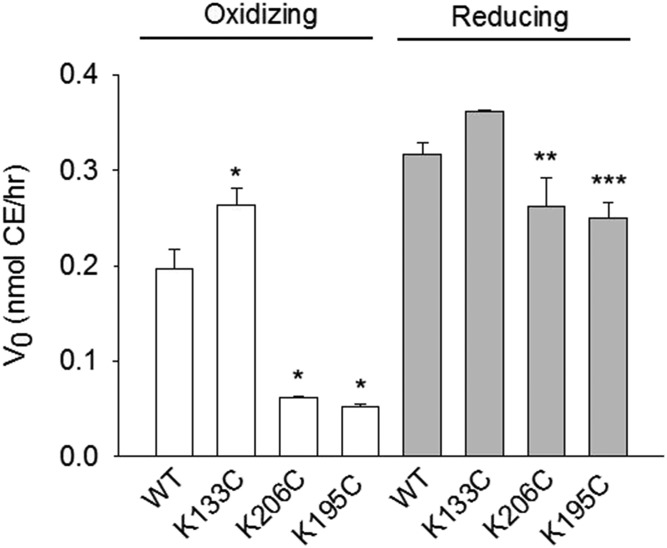Fig. 5.
LCAT activation by WT and Cys-mutant rHDL. rHDL particles (0.4 μM) generated with [3H]free cholesterol were incubated with LCAT (0.02 μM) in oxidizing (disulfide “locked,” white bars) and reducing (“unlocked,” 10 mM β-ME, gray bars) conditions as described in the Materials and Methods. The amount of labeled CE, as separated by thin-layer chromatography, was quantitated by scintillation counting. Bars represent mean ± SD of triplicate measurements for each condition. A one-way ANOVA and Holm-Sidak post hoc test were used to determine differences in the reaction velocity (V0) of CE production between WT and Cys-mutant rHDL (K133C, K206C, K195C vs. WT; *P < 0.001, F = 189.740, DF = 3; K206C reducing vs. K206C oxidizing, **P < 0.001, t = −11.823, DF = 4; K195C reducing vs. K195C oxidizing, ***P < 0.001, t = −22.023, DF = 4).

